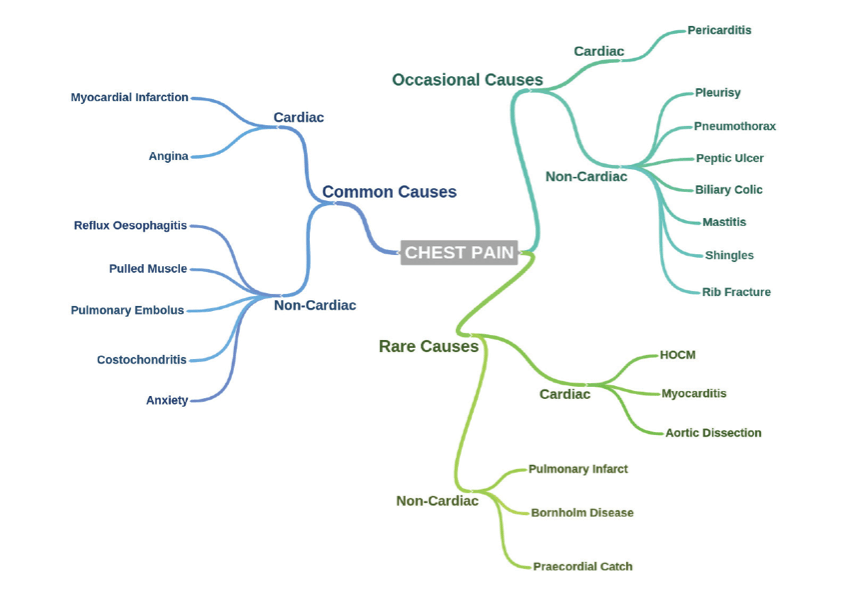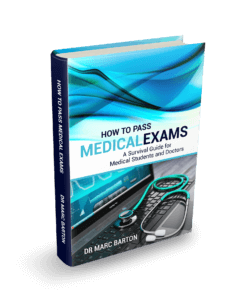“Memory is the treasure house of the mind wherein the monuments thereof are kept and preserved” – Thomas Fuller
Tricks of the mind
There are numerous methods and tricks available that you can use to help you recall information. I have tried all of the ones I will explain in this chapter with varying degrees of success. I would recommend giving each of them a go and using the methods that work best for you.
Mnemonics
Using mnemonics is one of my favourite memory tricks and has helped me remember many difficult concepts over the years. A mnemonic is a learning technique that uses a pattern of letters, ideas or associations to assist in remembering something. The word ‘mnemonic’ is derived from the Ancient Greek word ‘mnemonikos’, which means ‘relating to memory’. For whatever reason, mnemonics are very commonly used in medicine and I am certain that you will have encountered several already.
Mnemonics work by translating information into a form that is more easily retained by the brain. They make material more meaningful by adding associations and creating patterns and work best for material that is less meaningful to start with. They also help to organize information so that it can be more easily retrieved later and they typically involve visualizations that help make the facts more vivid. I can still remember mnemonics now that I learned in medical school almost 20 years ago.
A simple example of a mnemonic is the phrase ‘Memory Needs Every Method Of Nurturing Its Capacity’. This can be used to remember the spelling of the word mnemonic, with the first letter of each word in the phrase being used.
One of the most commonly used mnemonics encountered in the early stages of clinical medicine is ‘SOCRATES’. This mnemonic helps the student to remember the questions that they need to ask to evaluate the nature of pain that a patient is experiencing. This time each letter in ‘SOCRATES’ will trigger a question that should be asked to explore the patient’s pain:
- Site – where is the pain situated?
- Onset – when did the pain start?
- Character – what is the character of the pain e.g. sharp, dull etc?
- Radiation – does the pain radiate anywhere?
- Associations – are there any other symptoms associated with the pain?
- Time course – does the pain occur at any particular times or follow any pattern?
- Exacerbating/ relieving factors – does anything make the pain worse or better?
- Severity – how severe is the pain?
There are numerous websites available with lists of medical mnemonics available, an example being http://www.medicalmnemonics.com, it can be fun to try and write your own though.
Mind maps
Mind maps are a visual map of your ideas, usually created around a central idea or concept. They are a fantastic way of making notes on complex information. They help you to focus on important information using key words and can be easily annotated to contain important text and diagrams. They also allow visual connections to be made and are particularly useful for visual learners.
Below is an example of a mind map that I have made around the central concept of chest pain and in particular its differential diagnosis:
Many studies have shown the usefulness of mind-mapping for students and one particular study (Cunningham et al 2005), showed that 80% of students thought that ‘mind-mapping helped them to understand concepts and ideas in science’.
Method of loci
Method of loci, more commonly referred to as the mind palace technique, is a method used to help memorize large chunks of information. If you are a fan of the TV show ‘Sherlock’ you will have seen Sherlock Holmes use this technique to seek and reassemble important facts and associations in his memory to help him solve ‘The Hounds of Baskerville’ case.
The mind palace technique works as follows:
- Firstly visualize a place, this could be a room or a building. Make a mental image of what you see in the room or within the building.
- Then make a mental connection between one of these images and a manageable chunk of information. For example, if you see a table you could associate this with a list of investigations needed or the differential diagnoses for a particular medical condition.
- When you need to recall this information, perhaps in the exam itself, retrace your steps around the room until you find the table or any other item that you have used to connect information to. This should act as a trigger to remember the information connected with that particular object.
Mind palaces have been used effectively for centuries and there is documentation of it being used as a memory technique in Roman and Greek times. It is also used by memory expert Derren Brown to perform amazing feats of memory such as memorizing the order of 20 packs of cards in under an hour. Give it a try and see if it works for you.
Rhyming
Turning important pieces of information into rhymes is another great way of making the information easier to remember. It works in a similar way to building a mnemonic by creating easy to remember associations in your memory.
An example of a memory rhyme is the following traditional rhyme used to remember how many days there are in each month:
‘Thirty days have September,
April, June, and November.
All the rest have 31,
Except for February all alone,
It has 28 each year,
but 29 each leap year.’
Rhyming is an excellent learning method for auditory learners. Why not see if you can come up with a rhyme about a difficult to remember piece of information that relates to the exam that you are sitting?
Which memory tricks should I use?
Play around with these techniques, some will work particularly well for you and others might not. Try to focus on the techniques that you feel work best and don’t get too bogged down using those that don’t.
Key points to remember:
✓ Utilise the various memory tricks available to improve your learning
✓ Try creating your own mnemonics
✓ Mind maps are an excellent tool for visual learners
✓ Large chunks of information can be learned using ‘mind palaces’
✓ Rhyming is a useful tool for auditory learners
Medical Exam Prep would like to thank Dr. Marc Barton for permission to reproduce this extract from his book ‘How to Pass Medical Exams: A Survival Guide for Medical Students and Doctors’
About Dr. Marc Barton
Dr. Marc Barton qualified from Imperial College School of Medicine in 2001. Since that time he has worked in a variety of different medical specialities. He worked as a GP partner from 2006 until 2008 and more recently as a higher specialist trainee in Emergency Medicine.
‘How to Pass Medical Exams’ is available for purchase here.








Thanks for your helping